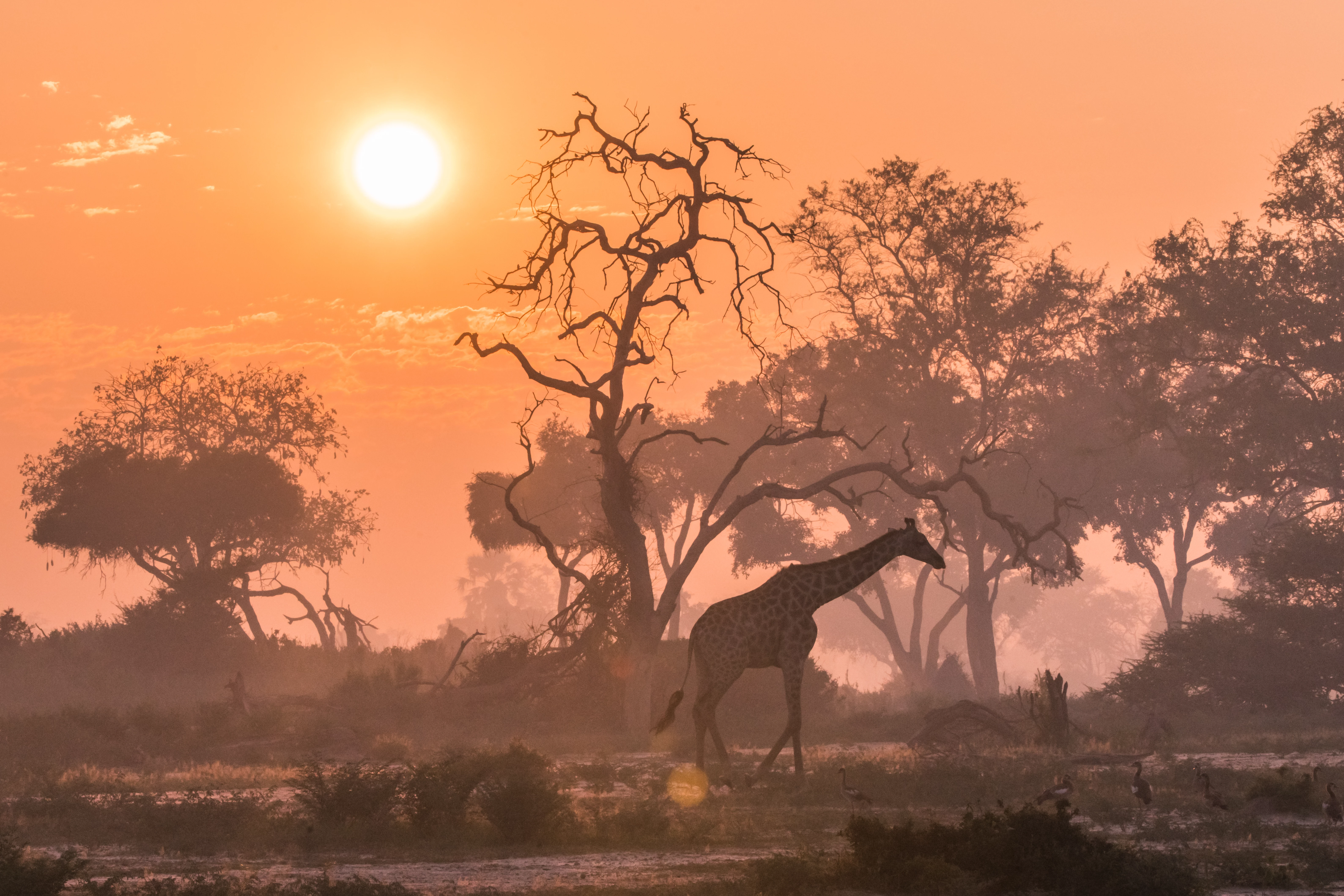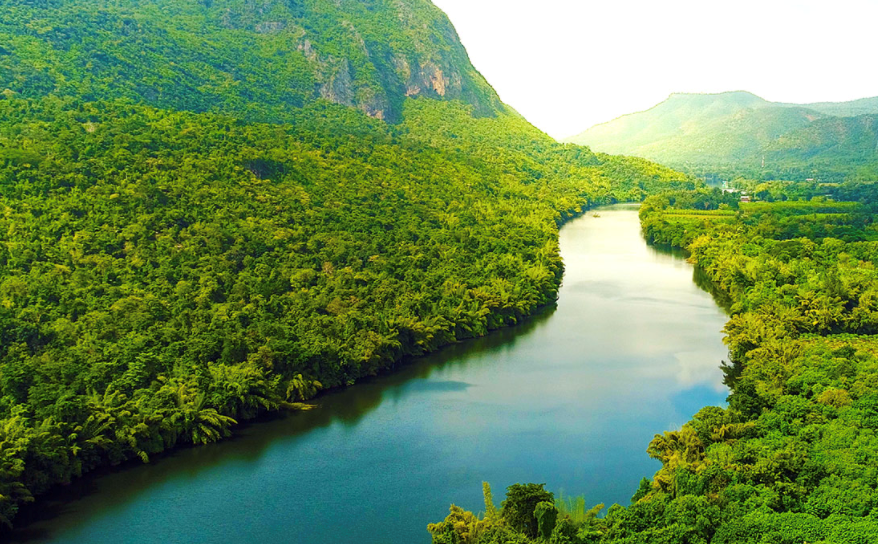Financial risk related to biodiversity loss: black swan or grey rhino?
Deze content is in het Engels. Wil je meer informatie? Neem dan contact op!
By Deon Nel, Chief Conservation Officer (WWF Netherlands), and Aaron Vermeulen, Head of Green Finance Unit (WWF Netherlands)
A recent article in the Economist asks whether large global systemic risks such as pandemics are so-called ‘black swan events’ – extreme events that take us by surprise – or if they are in fact large rhinos that wander around in plain sight. We know they are very dangerous; we just don’t know when they are going to charge at us.
We argue that financial risks related to biodiversity loss are more like those large obvious rhinos in plain sight. The science is clear that humanity’s impacts on our biodiversity has been dramatic over the past fifty years. We have lost 68% of vertebrate populations between 1970 and 2016, according to the Living Planet Index. But even more alarming is that this dangerous decline is destabilising our planet and can lead to sudden shifts or even complete collapse in systems.
The Amazon presents such a case. As the rainforest is thinned and cleared, its ability to produce its own rainfall is diminished, leading to a cycle of drying and more frequent fires. Over time, this will lead to a shift from rainforest to dry scrubland. This has not only devastating impacts on the region’s biodiversity but will disrupt weather patterns across large parts of South America, with significant impact on socio-economic activities. Even the Netherlands, which relies on vast imports of soy for animal feed from this region, would not be immune to this disruption.
Covid-19 is an example of biodiversity risks in plain sight. We have known for some years that continued deforestation, expansion of industrial agriculture and the trade in wild species, greatly increases our risk of outbreaks of zoonotic diseases such as the ebola and coronavirus. This risk has very suddenly over the course of the past year, manifested itself as one of the greatest social and economic disruptions of modern history
Biodiversity loss can be compared to playing a dangerous game of Jenga. We’re steadily removing the building blocks of biodiversity that will lead to sudden collapses in systems. These risks are in plain sight, we just don’t know exactly when they will be realised.

Biodiversity loss needs to be recognised as a fundamental driver of financial risks
Addressing biodiversity loss is now finally high up the agenda of many financial institutions. DNB, or the Dutch Central Bank, recently analysed the links between ecosystem services and risks to financial assets and financial institutions.
Although complex, the risks of biodiversity loss were found to be very real. The bank concluded its report Indebted to Nature that Dutch financial institutions have € 510 billion in exposure to companies with high or very high dependency on one or more ecosystem services. This comprises 36% of the portfolio examined. Interestingly, Dutch financial institutions have a € 28 billion exposure to pollination-dependent industries alone.
Reversing biodiversity loss provides an investment opportunity
An influential scientific paper we contributed to showed that it is possible to reverse global biodiversity loss while at the same time continue to feed a growing and more affluent human population. However, this would only be possible with a fundamental transformation of our food systems. This presents a huge opportunity to invest in local food production infrastructure that is climate resilient, preserves biodiversity, and promotes social equity.
Attracting capital investment at scale will, however, require innovating ideas that combine green and grey infrastructure. A practical example of this comes from the Netherlands, a low-lying country that faces significant risks from sea levels rise as a result of climate change. The traditional solution to these risks would be to simply raise the levels of existing barriers (or dykes) at a significant cost. However, alternative proposals have been made for a double dyke system with an intermediate buffer region that can be flooded. These areas provide both disaster protection, but also opportunities to improve biodiversity and to produce food differently. Blended green and grey infrastructure solutions have the scale to attract the investment capital needed to transform food production whilst benefiting our biodiversity.
Financial Institutions need to start acting now to reduce transition risks
Much work is still needed to develop consistent reporting, metrics and data needs for financial institutions to address biodiversity risks. The Task Force for Nature-Related Financial Disclosures (TNFD) has been set up to do just this. More than 73 institutions are now participating in the work of the TNFD.
But it would be strategically short sighted for financial institutions to wait until this work was concluded before acting. By starting to act now, institutions are able to dramatically reduce transitions risks. And there is no excuse to delay action.
Managing Risks
There are a number of actions that financial institutions can start with immediately to manage their biodiversity related risks.
-
1
Monitor biodiversity-related risks with spatial finance
With the advance in geo-spatial and earth observation data combined with artificial intelligence and machine learning, new opportunities are rapidly developing to manage risk, opportunity and impact. WWF-UK has been developing case studies and engaging with the financial sector for a number of years. Investors can also start using the WWF Water Risk Filter, which allows them to assess contextual water-related risks and design resilience strategies. Global Forest Watch is a database that records deforestation rates in real time based on satellite imagery. These images give you a good idea of how closely any operation is to a major deforestation zone.
-
2
Develop dedicated financial instruments
The emergence of environmental and biodiversity linked-financial instruments and products, such as investment funds or incentive schemes, offer new opportunities for financial institutions to address biodiversity loss. For example, WWF worked with Rabobank and dairy company Friesland Campina to develop a Biodiversity Monitor for the dairy farming sector and sustainability linked loans for dairy farmers in the Netherlands.
-
3
Engage with investees and clients
Financial institutions are increasingly using their influence as capital provider to address environmental risks through engagement, voting, and shareholder proposals. For example, Aviva engages with the agribusiness sector on the topic of pollinators.
-
4
Set ambitions and guiding policies
Although there is still a lack of broadly agreed metrics and targets for biodiversity, financial institutions can already sign up to the Finance for biodiversity pledge, have biodiversity-linked environmental targets such as a deforestation-free commitment, and implement guiding policies. For example, WWF provided recommendations to address biodiversity loss by the palm oil sector for financial institutions policies.
Identifying nature-positive investment opportunities
For the past several years, WWF has been working with partners to progress and guide the development of Bankable Nature Solutions that can attract more private sector capital into nature-positive opportunities.
This led to the development of the high-profile Dutch Fund for Climate and Development (DFCD). This blended finance facility uses € 160 million public sector finance to develop nature-based climate solutions that can attract over € 500 million in private sector finance over time. In this unique partnership, WWF and SNV work together in an origination facility to develop opportunities through their networks, whilst FMO, the Dutch Development Bank and Climate Fund Managers, a private equity firm, make the investments.
Reversing the trend in Biodiversity loss will require balancing the Financial Equation
Ultimately, biodiversity loss is being driven by a fundamentally skewed equation.
On the one hand, it is estimated that the 50 largest global banks are currently lending annually around US$ 2.6 trillion dollars to sectors that are impacting biodiversity; and harmful agricultural subsidies are estimated at US$ 450 billion. On the other hand, current investments into biodiversity amount to around US$124 and US$143 billion per year, an estimated shortfall of between US$ 722 and US$ 967 billion of what is needed every year, according to the report Financing Nature: Closing the global biodiversity financing gap by the Paulson Institute, the Nature Conservancy and the Cornell Atkinson Center for Sustainability.
Our challenge is to balance this equation - by investing less in the harmful stuff and more of the clever stuff that will secure and sustain our future!
About DFCD
The Dutch Fund for Climate and Development (DFCD) is a climate fund, dedicated to supporting climate adaptation and mitigation projects which benefit vulnerable communities and landscapes. Initially funded by the Dutch government, it is powered by a consortium of four expert organisations: FMO (Dutch Entrepreneurial Development Bank), CFM (Climate Fund Managers), SNV, a global development partner, and WWF Netherlands.

